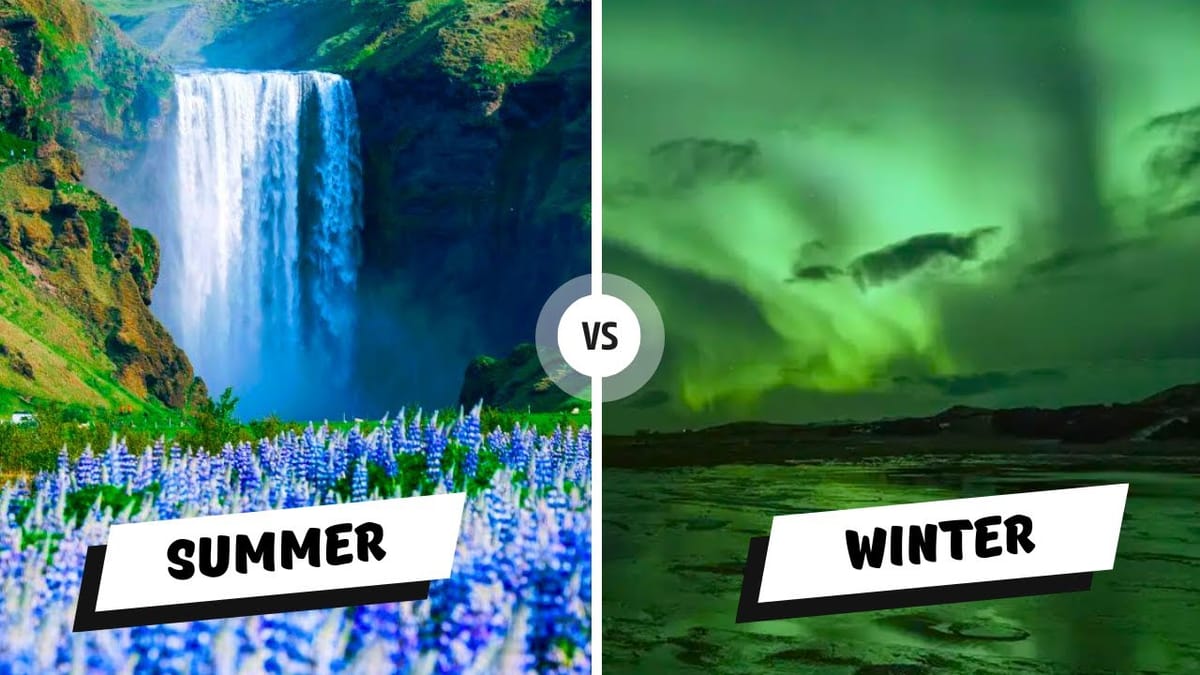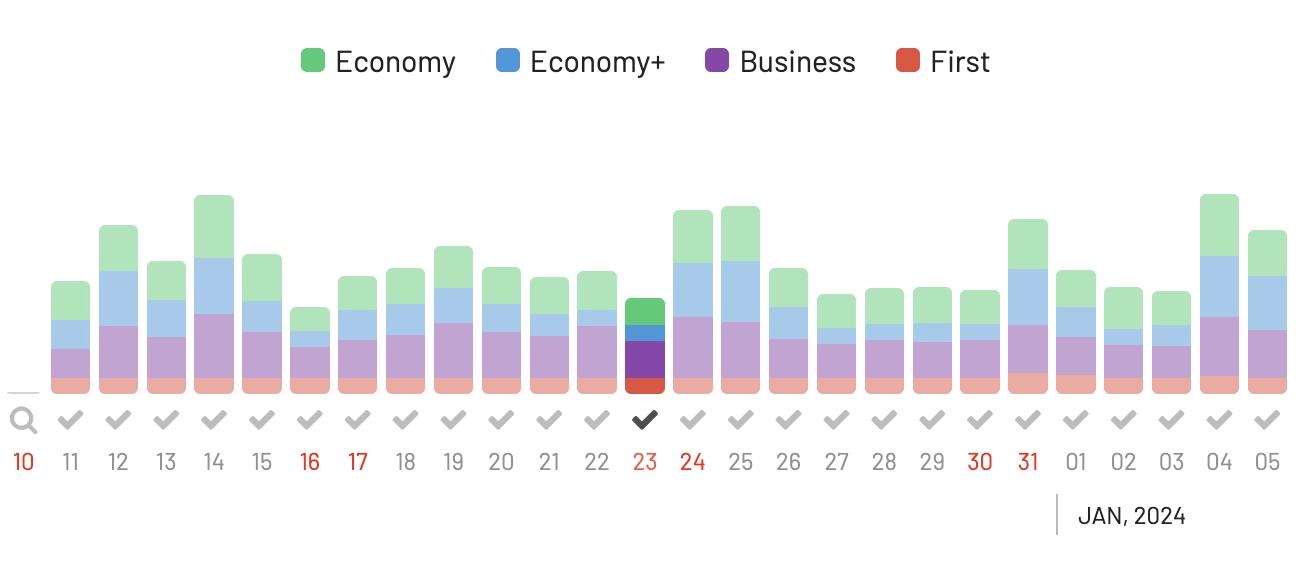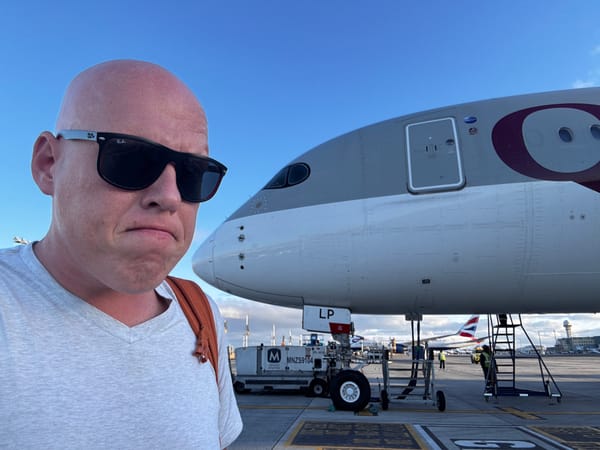Summer vs. Winter Travel Redemptions: How Seasonality Impacts Your Award Travel ROI
In the world of award travel, timing is everything. At UpNonStop, we often field questions from savvy travelers and business leaders alike who wonder: "Should I be booking my award flights in the summer, or is winter the better time to maximize my points?"


The answer, like many things in the loyalty space, is nuanced—but understanding the seasonal dynamics of airline pricing and rewards programs can make a substantial difference in your redemption value.
Business travelers may benefit from winter’s lower redemption costs, while leisure travelers with flexibility can score premium redemptions during off-peak periods. Strategic booking—leveraging shoulder seasons, transfer partners, and early planning—can help optimize your travel ROI year-round.
Whether you're a frequent flyer managing your personal portfolio of points or a business owner leveraging corporate travel rewards, the tug-of-war between summer and winter redemptions is a crucial consideration in crafting a smart travel strategy.
In this article, we’ll break down the key factors that affect redemption rates across seasons, unpack the hidden variables airlines don’t advertise, and help you identify when—and how—you should deploy your hard-earned points for maximum value.

The Fundamentals of Award Travel Seasonality
Airline award pricing is dynamic. Most frequent flyer programs have moved away from fixed charts and now price redemptions based on cash equivalents. As cash fares fluctuate with demand, so too do redemption rates.
Summer and winter travel seasons represent opposite ends of the demand spectrum—but it's not as simple as "summer is peak, winter is off-peak." Geography, market segmentation, and consumer behavior all complicate this dichotomy.

Summer: The Classic High-Demand Season
From June through August, demand for leisure travel surges across much of the Northern Hemisphere. Families take vacations, students study abroad, and conferences and corporate retreats fill business-class cabins.
For award travelers, this typically means:
- Higher redemption costs: Airlines know their planes will be full, so they reduce saver-level inventory and increase the number of miles needed for premium cabin seats.
- Tighter availability: Those hard-to-snag transatlantic business class seats? They’re even harder to grab in summer unless you book far in advance or get lucky with last-minute releases.
- Increased competition: Even infrequent travelers dip into their points balances during the summer, further depleting availability.
Yet, there’s a hidden benefit: while cash fares may spike dramatically, the cash-to-miles conversion can sometimes improve, especially on certain routes. For instance, flights to Europe in peak summer might yield a cents-per-mile (CPM) value of 2.0 or higher for business class seats when cash fares cross the $6,000 mark.

Winter: The Underrated Sweet Spot
Winter travel—defined broadly as mid-November through February—presents a very different landscape. While holiday periods like Christmas and New Year’s see a spike in demand, the surrounding weeks tend to be quieter.
For award travelers, winter often means:
- Lower redemption rates: Airlines open up more saver-level inventory, particularly on long-haul routes, to stimulate demand.
- Better cabin availability: Premium cabins, especially business class and first class, are more accessible on routes like North America to Asia or Europe.
- Hidden gems: Exotic destinations like Southeast Asia, the Maldives, or parts of Africa enjoy peak weather in the Northern Hemisphere’s winter, yet award space remains favorable compared to summer.

Business Travelers vs. Leisure Travelers: Who Wins When?
It’s not just about personal preferences; your travel profile plays a role in determining seasonal value.
Leisure Travelers
Families and solo leisure travelers tend to plan around school holidays and summer breaks. If you’re redeeming points in the summer, you’re often forced to compete with millions of others doing the same. However, if you have flexibility, winter opens the door to quieter airports, fewer blackout dates, and more favorable award inventory.
For leisure travelers aiming for aspirational redemptions—think business class to Europe or Asia—January and February are consistently two of the best months to snag excellent deals. For example, round-trip business class tickets to Tokyo or Frankfurt that require 180,000 miles in August might be available for as little as 120,000 miles in January.
Business Travelers
For business owners and corporate travelers who must travel year-round, the dynamics shift. Business travel often coincides with fiscal calendars, industry events, and end-of-year meetings. Surprisingly, some business-heavy routes (New York to London, for instance) see sustained demand even in winter.
However, winter still offers better redemption flexibility for business travelers. Companies using corporate cards to accrue points for team travel can benefit from fewer restrictions and improved ROI during these months. Additionally, winter provides a strategic opportunity to secure premium cabin redemptions for year-end international conferences without burning excessive points.

Geography Truly Changes the Game
The summer vs. winter question isn't one-size-fits-all globally. Consider these regional quirks:
- Australia and New Zealand: Their summer is the Northern Hemisphere's winter. Demand for flights to Sydney or Auckland peaks from December to February, complicating winter redemptions to Oceania.
- The Caribbean and Mexico: Peak season is from December through April, driven by travelers escaping cold weather. Award pricing here often mirrors high-demand summer routes elsewhere.
- Europe: While summer sees peak travel, winter redemptions to cities like Paris, Rome, or London are often undervalued gems. Combine cheaper award tickets with off-season hotel rates for an even bigger win.
- Asia: Lunar New Year (late January or February) creates a mini-peak season across East and Southeast Asia, temporarily raising both cash fares and redemption rates.

The Hidden Influence of Airline Revenue Management
Airlines have grown increasingly sophisticated at controlling inventory. Dynamic award pricing, married to AI-driven revenue management systems, means that patterns are evolving constantly.
Key trends we’ve observed at UpNonStop:
- Airlines are reducing the gap between cash pricing and award pricing, making redemption arbitrage harder during peak seasons.
- Some loyalty programs, like Air Canada’s Aeroplan and Virgin Atlantic’s Flying Club, still offer outsized sweet spots year-round, but these pockets of value are being steadily compressed.
- Flash sales and unannounced award discounts often emerge during slower winter periods, giving opportunistic travelers a leg up.

Strategic Takeaways: How to Play It Smart
- Plan for Shoulder Seasons Shoulder seasons—late spring (April-May) and early autumn (September-October)—combine lower demand with lingering good weather. Award pricing trends more favorably, with fewer crowds and lower cash fares.
- Use Winter for Aspirational Redemptions Winter is the ideal time to book aspirational trips. Those long-haul business and first-class cabins are not only more available but often require significantly fewer points.
- Hedge Summer with Early Bookings If summer travel is non-negotiable, booking 11-12 months out is crucial. Set award alerts, monitor release calendars, and pounce when inventory opens.
- Leverage Transfer Partners Wisely Programs like American Express Membership Rewards or Chase Ultimate Rewards offer flexibility to shift points to where they’re most effective.
- Mix and Match: Hybrid Redemptions Book premium cabin awards during the winter and rely on cash fares or discounted economy for summer travel where award rates are inflated.

The UpNonStop Edge
At UpNonStop, we specialize in helping businesses and individuals navigate these complexities. Whether you’re trying to optimize year-round corporate travel or planning once-in-a-lifetime leisure trips, we ensure your points work harder for you.
The bottom line? Both summer and winter offer unique advantages—but knowing how and when to leverage each is where travelers unlock true value.




